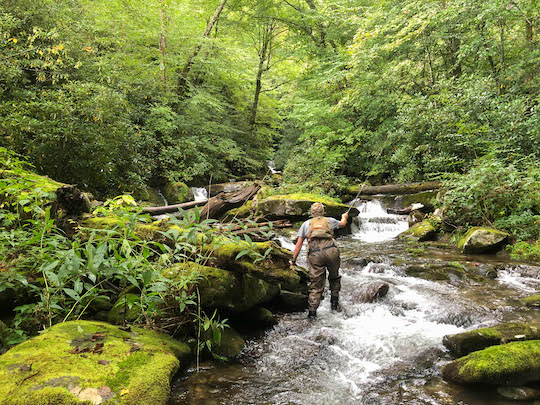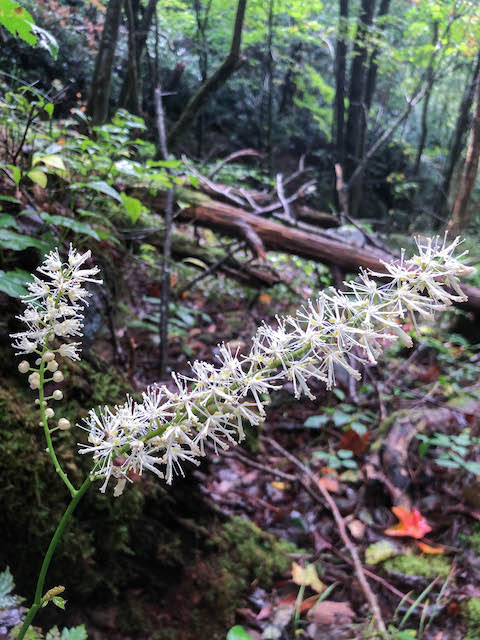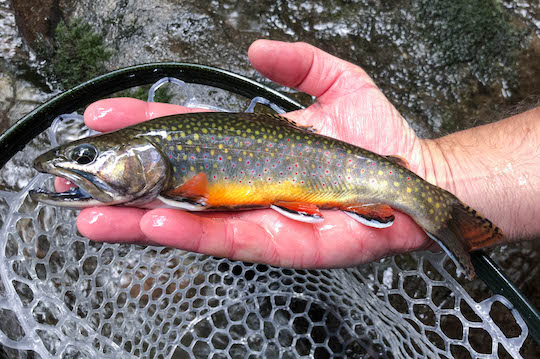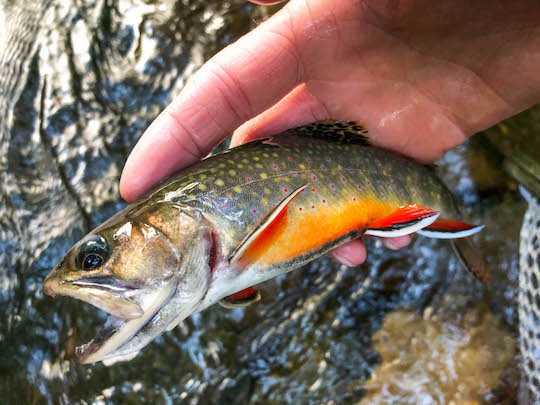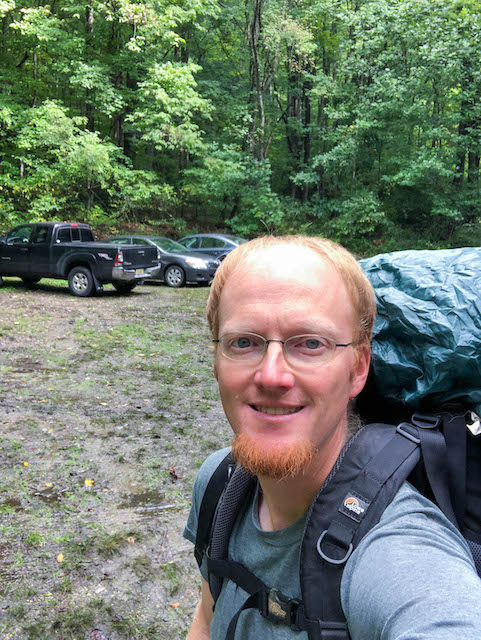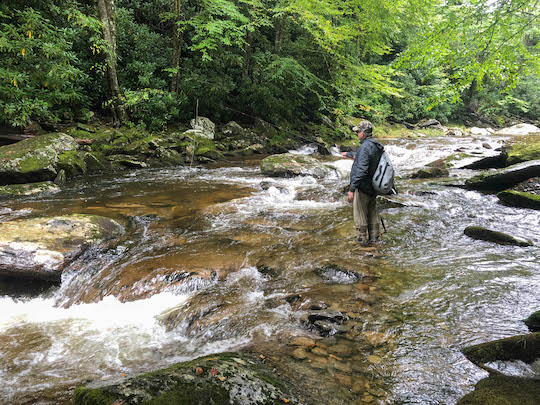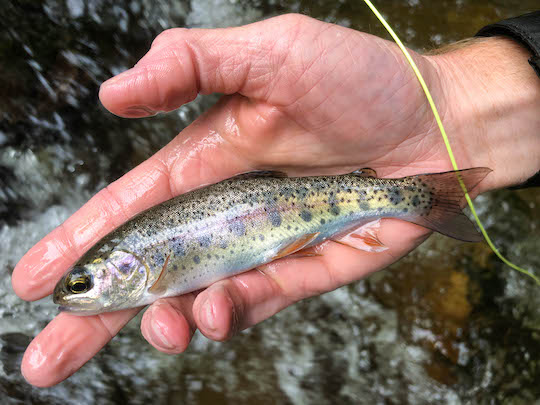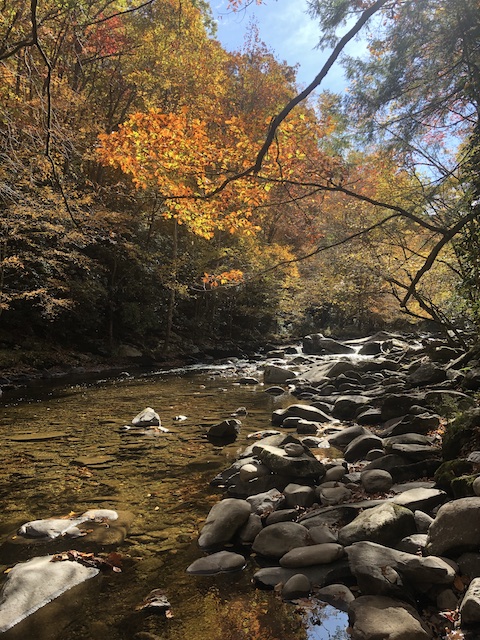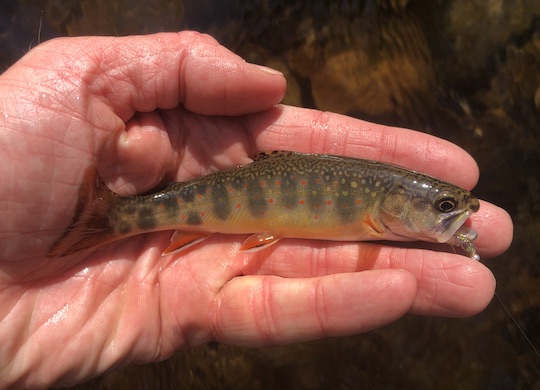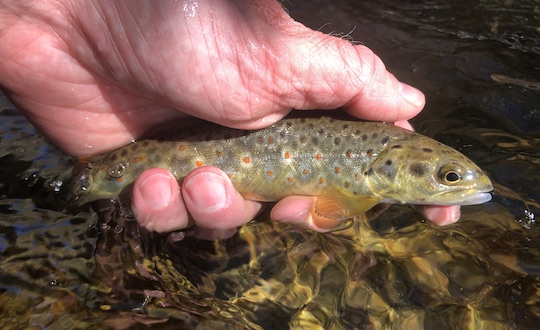If you haven't read about the first couple of days of my fall backpacking and fly fishing trip adventure, you might enjoy reading those first. If you are already caught up, then skip these two stories and continue on with day 3!
Annual Fall Backpacking Trip 2022: Day 1
Annual Fall Backpacking Trip 2022: Day 2
During the lead up to this backpacking trip, my friend Buddy and I had many detailed conversations about gear. As a retired engineer, Buddy is more diligent than most about counting every ounce of weight in his pack. I got to reap some of the benefits, because it motivated me to pay more attention to pack weight than usual. One of the things Buddy had decided to do to limit his overall weight was eliminating his fly rod and just fishing Tenkara rods on this trip. While I enjoy casting and wanted a "regular" fly rod, I often carry a Tenkara rod as backup and decided this would be the perfect excuse to finally fish this rod for a whole day, something I hadn't done in a good long while.
The rod I usually take on brook trout trips is a Suntech Kurenai HM 30. It is an excellent choice for a backup rod because it weighs under 1 ounce. In other words, I'm not adding much extra weight by taking it. This rod was gifted to me by a good friend and quickly become one of my absolute favorite rods. I also have some nice Tenkara USA rods which are fantastic fishing tools themselves, but this rod is by far and away one of the nicer rods I own. Anyway, if you have any questions about this rod, don't hesitate to ask.
The morning of our second full day in the backcountry and third day out overall dawned just about perfectly. Skies were partly cloudy, and there was just enough cool air at this high altitude to remind me that fall was on its way. I was excited about the day of fishing and ready to get going. After a quick breakfast, Buddy and I hit the trail. My favorite fly rod was stashed back in camp, and I was going for a Tenkara only experience.
To complete my setup, I had a size 3.5 level line and 6x tippet. While we wanted to fish dry flies, I had got started on a bad trend the day before fishing a Barbie Bug. It had worked so well, I knew it wouldn't take me long to put one back on. Sure enough, after not finding any fish willing to rise early in the day, I went to the Barbie bug and never really looked back. I was fishing the whole setup like a high stick nymph rig. The Kurenai rod enabled me to place the fly wherever I wanted and was so delicate that even the smaller brook trout felt like monsters.
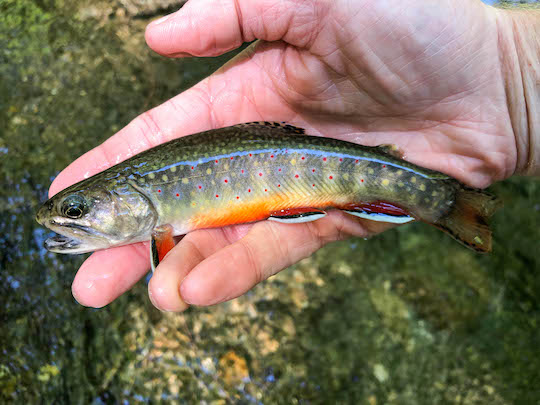 |
| ©2022 David Knapp Photography |
While the numbers were incredible, the overall size seemed smaller on this stretch of water. Buddy prefers a stretch just a little higher than where I fished on day two with Russell. For me, in addition to the insane numbers of fish, the highlight of the day was fishing a little higher up this drainage than I have ever been. I also took the opportunity late in the day to scout further up the trail and look for additional new access points to that upper end of the drainage. I don't know about the whole way up, but I did find an access point that could be used to enter or exit the stream far enough up to open up almost another whole day of fishing.
Next time, I intend to explore this stretch. That said, with the overall average size being down compared to further downstream, I don't expect to find too many monsters. Of course, around here, we don't go fishing for brook trout with the expectation of catching big fish. The trip is about so much more than the size of the catch. Otherwise I would have quit these excursions long ago. Here is one of our better fish size wise this day.
 |
| ©2022 David Knapp Photography |
The majority of fish in this section didn't seem to be as bright with their colors either. I don't know why that is, but it has tended to be the same on other trips as well. Either way, this was probably one of the prettier fish of the day.
 |
| ©2022 David Knapp Photography |
By the time we had fished up into new to me water, the day was getting late. I wanted to snag one more to reach a nice round number for the day. I rarely count, but very occasionally on these highly productive small streams I do. This is mostly just a curiosity. For example, when it feels like you caught a ton of fish, was it 40? 50? 70? 100? Most days I don't have the first clue, but occasionally it is fun to keep track. On the other hand, I don't want to take things too seriously, so I also tend to forget as soon as possible. I have good memories of days spent on the water with friends, and pictures of gorgeous native char or wild trout. What more do I need?
After reaching the trail, I hustled up to look for new/additional access points. One likely spot that I had originally located from the stream bed turned out to be even better than I had hoped for. It will be the entry point for a future expedition to push ever farther up this favorite drainage. I'm still eyeing some spots MUCH further up the drainage for possible entry/exit points, but so far haven't turned anything else up.
Buddy had started back towards camp when I headed up the mountain, but I caught him nearly back at camp on the way down. We got back and enjoyed one last evening in the mountains before hiking out the next day. There is always a bit of a letdown as the end of the trip approaches. Yet, at the same time, there is also excitement to get home and see my family, eat home cooked food, and sleep in my own bed. My backpacking setup has gotten pretty cushy thanks to a Big Agnes Q Core deluxe sleeping pad, but it is still sleeping on the ground no matter how comfortable the setup gets. Still, there is nothing better than spending the night in the woods next to a rushing mountain stream, so it is always best to end a trip soon enough to leave you wanting a little more. This trip was just a warmup for an epic adventure merely a few days later, but I'll save that story for another time...



